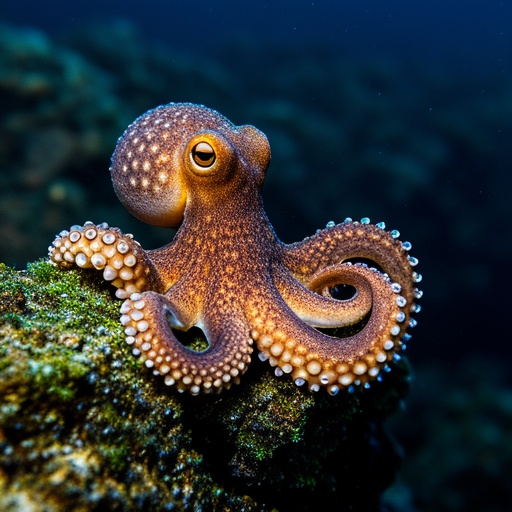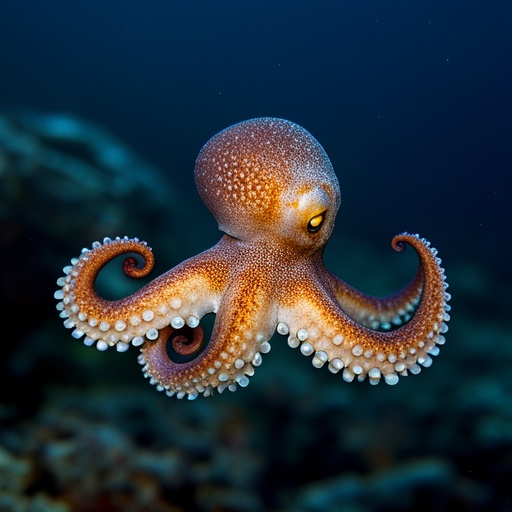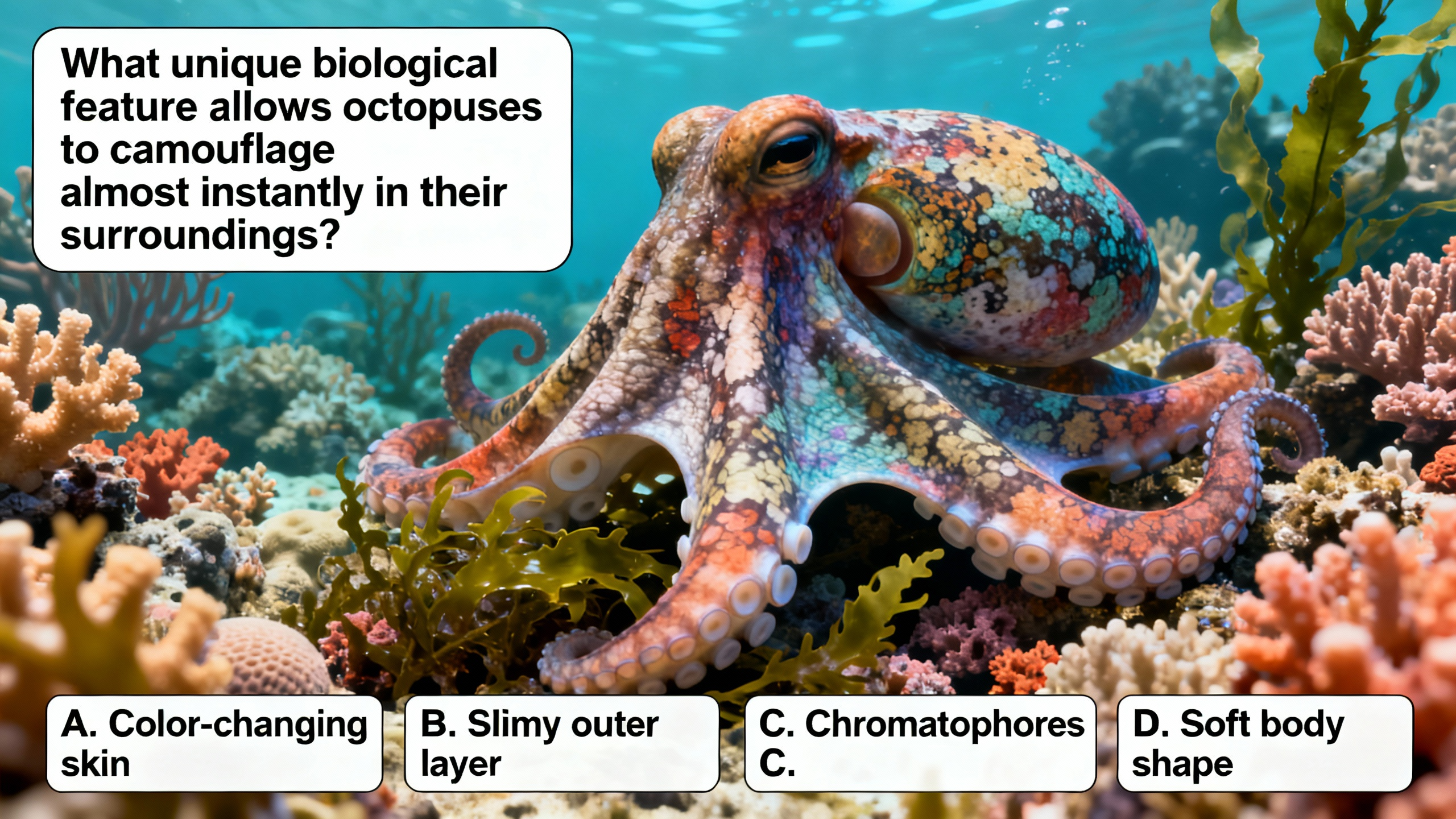Octopus Camouflage: A Master of Disguise
Octopuses possess a truly remarkable ability to camouflage almost instantly in their surroundings, which is mainly attributed to their unique biological features, primarily chromatophores, papillae, and their highly developed nervous system.
 Chromatophores are specialized pigment - containing cells that play a central role in the octopus's camouflage. These cells are located in the outermost layer of the octopus's skin. Each chromatophore is a tiny sac filled with pigment, and it is connected to a set of muscles. When the octopus's nervous system sends a signal, these muscles contract, causing the chromatophore to expand. This expansion exposes more of the pigment to the surface, changing the color of the skin. Octopuses have three main types of pigments in their chromatophores: red, yellow, and brown. By controlling the expansion and contraction of different combinations of chromatophores, they can create a wide range of colors and patterns. For example, if an octopus wants to blend in with a coral reef that has a lot of red and brown hues, it can expand the red and brown chromatophores to match the color of the reef.
Chromatophores are specialized pigment - containing cells that play a central role in the octopus's camouflage. These cells are located in the outermost layer of the octopus's skin. Each chromatophore is a tiny sac filled with pigment, and it is connected to a set of muscles. When the octopus's nervous system sends a signal, these muscles contract, causing the chromatophore to expand. This expansion exposes more of the pigment to the surface, changing the color of the skin. Octopuses have three main types of pigments in their chromatophores: red, yellow, and brown. By controlling the expansion and contraction of different combinations of chromatophores, they can create a wide range of colors and patterns. For example, if an octopus wants to blend in with a coral reef that has a lot of red and brown hues, it can expand the red and brown chromatophores to match the color of the reef.
 Another key biological adaptation is the papillae. Papillae are small, muscular bumps on the octopus's skin. The octopus can control the shape and size of these papillae. By changing the configuration of the papillae, the octopus can alter the texture of its skin. This ability to mimic the texture of its environment is crucial for effective camouflage. If the octopus is resting on a rocky seabed, it can extend the papillae to create a rough, bumpy texture that resembles the rocks. Conversely, when it is in a smooth - surfaced area, it can flatten the papillae to make its skin look smooth.
Another key biological adaptation is the papillae. Papillae are small, muscular bumps on the octopus's skin. The octopus can control the shape and size of these papillae. By changing the configuration of the papillae, the octopus can alter the texture of its skin. This ability to mimic the texture of its environment is crucial for effective camouflage. If the octopus is resting on a rocky seabed, it can extend the papillae to create a rough, bumpy texture that resembles the rocks. Conversely, when it is in a smooth - surfaced area, it can flatten the papillae to make its skin look smooth.
The highly developed nervous system of the octopus is also essential for this rapid camouflage. The octopus has a large and complex brain, and its nervous system is extremely efficient at processing visual information. When an octopus's eyes detect the colors, patterns, and textures of its surroundings, the brain quickly analyzes this data and sends signals to the chromatophores and papillae. This real - time information processing allows the octopus to adjust its appearance almost instantaneously, making it nearly invisible to predators and prey in a variety of marine environments. In conclusion, the combination of chromatophores, papillae, and a well - developed nervous system gives octopuses their extraordinary ability to blend in with their surroundings in the blink of an eye.










